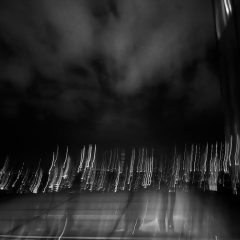During year one we learnt some basic soldering when we made our contact microphones, this was my first time soldering and was a good way to introduce me to the world of D.I.Y electronics. Now a year later we are soldering more convoluted devices. I will be talking about my soldering for the Space Invader synthesiser. I did not finish building the synthesiser, but the experience of soldering was what I was really seeking.

Soldering this synthesiser proved a difficult task, there are a lot of tiny components that are used and using a small board to solder on proved a challenge for me at first. The week prior we had a lesson where we practised soldering onto circuits to work on our soldering skills, this was very helpful because if not for that lesson this would have failed very early. Luckily thanks to my great classmates and tutor who gave me help when I needed it during that session, I came into the space invader session confident. This session was my first time soldering to this level, cutting my own wires and trimming them, and fetching the resources myself and checking if they are correct.

In the picture above you can see my soldering efforts, the switch on the right with the component soldered on was the first thing we did. I found this to be the most difficult part of the class as figuring out how to solder the very thin arm of the component to the other component was very difficult. I was then shown that if you use blu tac it can hold whatever you need in place, which made everything else I did throughout that session a breeze.

All I ended up being able to do in the session was to solder these compactors and do all the preparation that I mentioned earlier, even though I did not get a synthesiser at the end of the session. The knowledge of how to solder, do all the preparation and follow instructions was very valuable to me.
